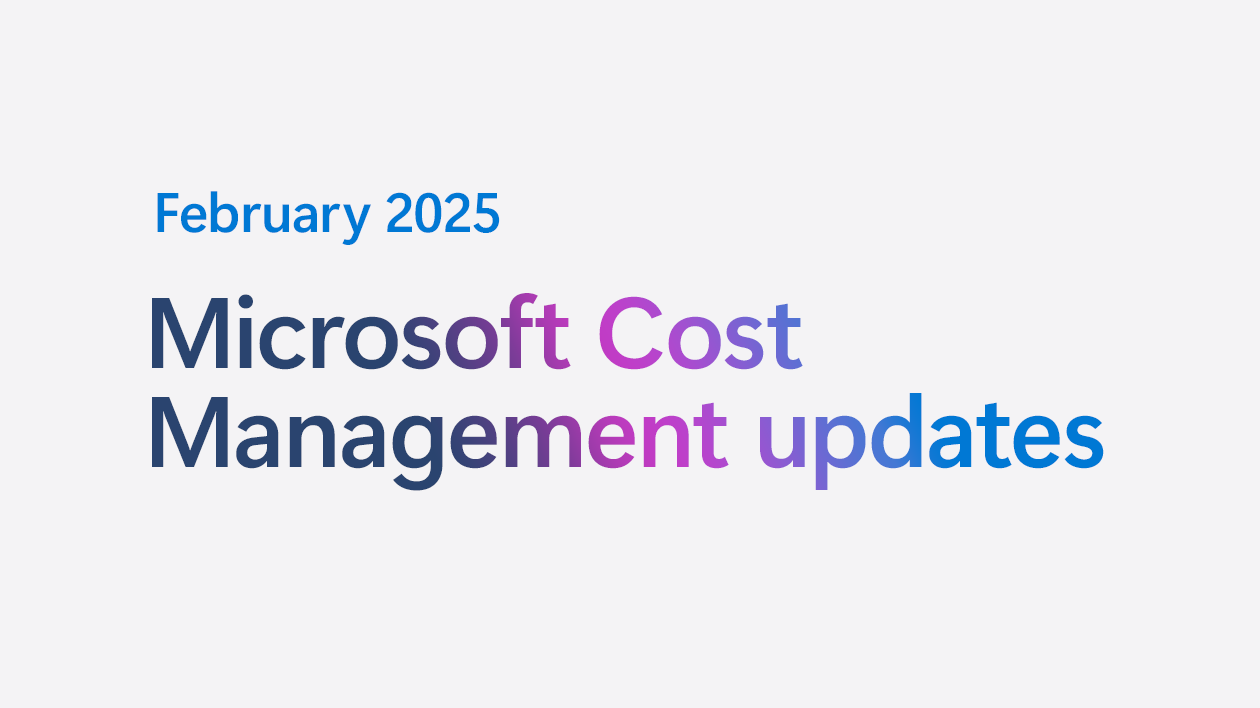We’re all the time in search of methods to be taught extra about your challenges and the way Microsoft Value Administration may help you.
Whether or not you’re a brand new scholar, a thriving startup, or the most important enterprise, you will have monetary constraints, and it’s essential know what you’re spending, the place it’s being spent, and easy methods to plan for the longer term. No person needs a shock in relation to the invoice, and that is the place Microsoft Value Administration is available in.
We’re all the time in search of methods to be taught extra about your challenges and the way Microsoft Value Administration may help you higher perceive the place you’re accruing prices within the cloud, establish and stop dangerous spending patterns, and optimize prices to empower you to do extra with much less. Listed here are a number of of the most recent enhancements and updates based mostly in your suggestions:
Let’s dig into the main points.
New fields for price allocation (Enterprise Settlement clients)
Value allocation, one of many predominant FinOps capabilities, is a set of practices to make sure that totally different models inside your group have visibility into and pay for his or her portion of the cloud invoice. Offering them with this visibility allows them to optimize and in addition plan their prices successfully. Azure gives loads of capabilities to allow you to allocate costs effectively and efficiently.
Azure’s native resource and billing hierarchy enables you to organize your resources and policies around them as per your organizational boundaries. The EA (Enterprise Agreement) billing hierarchy is shown below:

You can use different levels of this hierarchy to meet your allocation needs. To make it easy for you to do allocation based on Departments and Accounts, we have made a couple of changes to the cost datasets:
- AccountId column has been added.
- InvoiceSectionID column which was previously empty has now been populated with DepartmentId.
Unlike names, these IDs are unique for your enrollment and remain constant, so are better suitable for your allocation needs. Both these changes are available through Exports as well as the Cost Details API.
Copilot nudges
Copilot is a great way to get your costs queries answered using natural language. With ‘View in Cost analysis’ functionality, you can also directly navigate to Cost analysis to a custom view based on your prompt. I covered this functionality in detail in my November blog.
We’re thrilled to announce the launch of a new feature aimed at enhancing your experience with Copilot assistant. We’ve added sample prompts (nudges) to the overview page to encourage and guide users to interact with Copilot more effectively. These prompts are meticulously designed to guide users through essential functionalities such as breaking down current costs, comparing costs across different periods, and forecasting, all without encountering issues related to prompt engineering.

Try out the sample prompts today and see how Copilot can assist you in managing your costs.
Learning FOCUS: Introducing an open billing data format
The FinOps Open Cost and Usage Specification (FOCUS) is a groundbreaking initiative to define a common format for billing data that empowers organizations to better understand cost and usage patterns and optimize spending and performance regardless of which cloud, Software as a Service (SaaS), or on-premises services you use. As the new language of FinOps, FOCUS enables practitioners to collaborate more efficiently and effectively with peers throughout the organization and even maximize transferability and onboarding for new team members, getting people up and running quicker.
We’ve seen tremendous growth since the FOCUS 1.0 launch in June of 2024 and are excited to hear success stories about how people are using FOCUS to streamline past and future operations. The hardest part is getting started. And to help you with that, my colleague, Michael Flanakin started a new Learning FOCUS blog series to teach you everything you ever wanted to know about FOCUS, how to leverage it, related tools, and a few tips and tricks along the way.
Start with the FOCUS introduction for a high-level understanding of what makes up a FOCUS dataset and continue reading each of the subsequent blog posts to learn more about the columns that tell you how much you’re being charged, when you incurred those charges, and what resources you deployed that incurred the charges. And stay tuned over the coming weeks and months as Michael continues to explore new columns and concepts in this informative blog series on the FinOps blog.

New ways to save money in the Microsoft Cloud
Documentation updates
Here are a few documentation updates you might be interested in:
Want to keep an eye on all documentation updates? Check out the Cost Management and Billing documentation change history in the azure-docs repository on GitHub. If you see something missing, select Edit at the top of the document and submit a quick pull request. You can also submit a GitHub issue. We welcome and appreciate all contributions!
What’s next?
These are just a few of the updates from last month. Don’t forget to check out the previous Microsoft Cost Management updates. We’re always listening and making constant improvements based on your feedback, so please keep the feedback coming.
Follow @MSCostMgmt on Twitter and subscribe to the YouTube channel for updates, suggestions, and tips. You may as well share concepts and vote up others within the Value Administration suggestions discussion board or be a part of the analysis panel to take part in a future research and assist form the way forward for Microsoft Value Administration.


